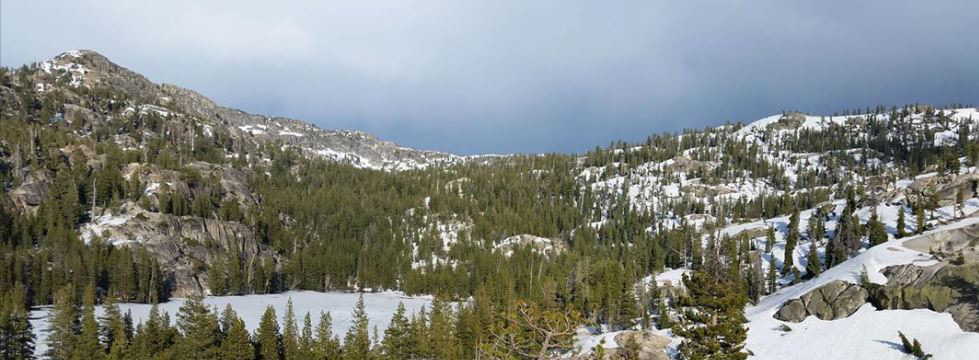
July 2, 2017 - The Tioga Road has finally opened, leading many hikers to some of the most tempting trailheads in the country. After a snowy winter, however, even experienced summer wilderness explorers might hit a few bumps (more likely raging rivers) along the trail.

Tuolumne River downstream of Twin Bridges on the way to Glen Aulin
Big Snowy Winter
This winter Yosemite received 177% of average snowfall (from the April 1st snow survey). To give some insight, 2016 April snow surveys measured 89%. That means Yosemite, overall, got twice the amount of snow than the year before! To go even further, 2015 April snow surveys only measured 7% of average (25 times less than this winter)! Why are we throwing all these numbers at you? Because...Trails Will NOT be the same as previous years
Big snow means big snow melt. Creek crossings will be drastically different from previous summers. Warm temperatures and long sunny days are causing snow to rapidly melt and fill up streams and creeks. Water levels for most rivers and creeks have already peaked but are still running high, roughly 150% to 250% of average. Waterways can be extremely hazardous to cross. If you do not feel comfortable crossing a creek, turn around. Your life is not worth it. There already have been several near-drownings in Yosemite this spring. Be knowledgeable and practice safe creek crossing techniques:- Scout out the best location to cross; don’t assume that it’s going to be right in front of you. Water levels and current are dynamic, so a good crossing point on one day may not be safe on another.
- Before entering a river or stream, release the hip and chest straps on your backpack so you can shed it quickly if you lose your footing and get washed downstream.
- Do not cross a stream bare foot! Slippery rocks and submerged obstacles may lurk underwater. Keep your boots on or switch to water-crossing shoes with good traction and toe protection.
- Use a hiking stick or trekking poles when fording. You should always try to maintain 3 points of contact to the stream bed.
- If possible, cross as a group. With two people, the stronger person can be upstream, breaking the current for the other. Link arms, communicate, and help each other cross safely.
- Avoid crossing at points where the banks of the stream are narrow. The power of the current will be strongest here and could sweep you off your feet.

6ft 5in tall Wilderness Ranger ON TRAIL to Glen Aulin
What’s more? There’s still snow. A LOT OF IT
Snow remains throughout the high country, generally at elevations 8,500 ft and above, though this may vary due to aspect and vegetation. This snow will likely stick around for several more weeks. For example, want to hike to May Lake? You’ll find six feet of snow remaining on the trail and a frozen May Lake at the end of it. Needless to say, DO NOT WALK ON FROZEN LAKES. Ice can be tough to read and falling through it rarely ends well.
May Lake on June 29, 2017
If you choose to do a hike in the high Sierra, be knowledgeable and prepared for over snow travel. Have a map and compass (and know how to use them) as many trails are completely snow-covered. There are no signs or flagging to assist with navigation. At the same time, be wary of trails made by previous hikers as they may not have known where they were going. Keep an eye out for snow bridges that can be less than a foot thick but may be several feet off the ground. A fall through a snow bridge can mean sprained ankles, broken legs, or worse.
And remember...
In the wilderness, your safety is your responsibility.
Be prepared for any situation that may arise and know what you are getting into.- Find out latest trail conditions on Yosemite National Park’s website or, better yet, ask a ranger when you arrive in the park.
- Check the weather before your hike!
- Do not rely on smart phones as maps or for communication as cell phone service is limited in most of the park.
- Pack comfortable layers, bring nutritious snacks, and stay hydrated!
Source: NPS








